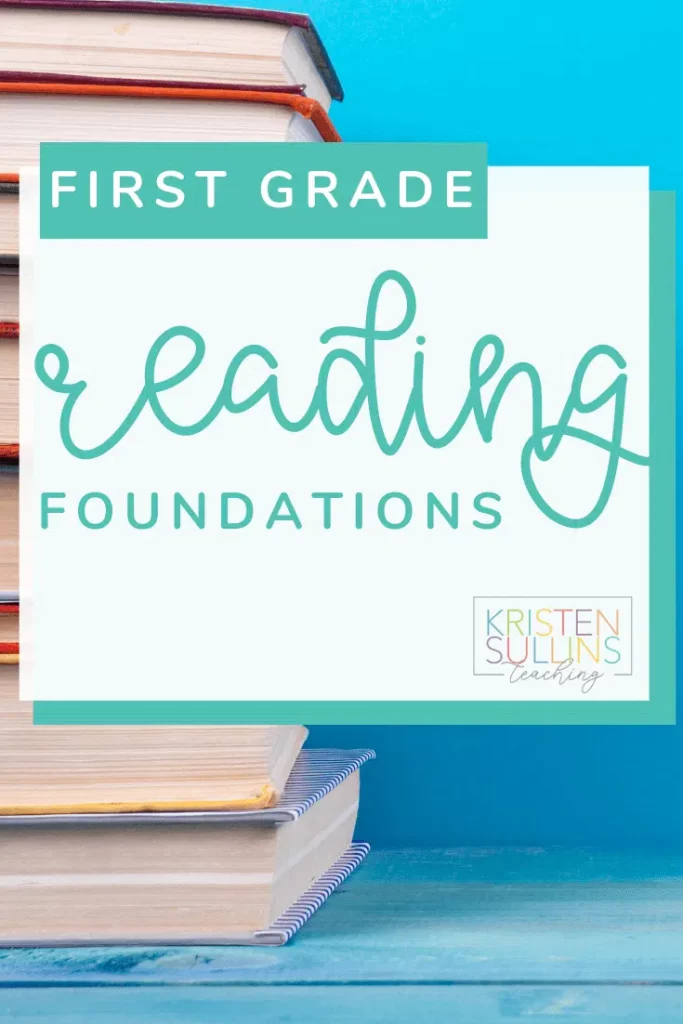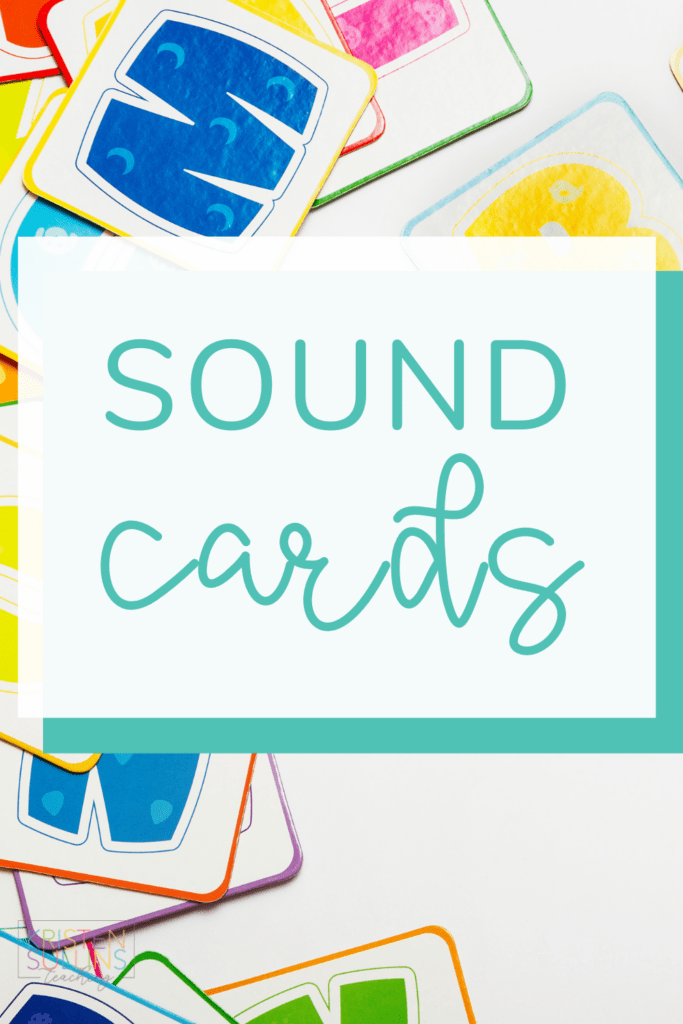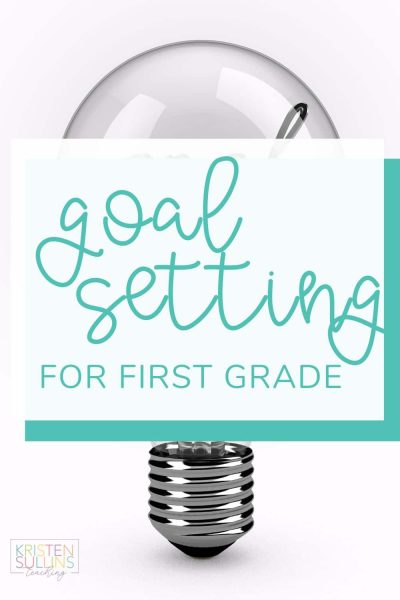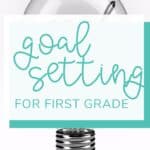Goal setting in first grade…. are you crazy? Nope!
As I'm writing this, we are ringing in the new year!
Something many people do this time of year is set goals. As adults we often reflect on our year and make goals, sometimes professional and sometimes personal, that we want to focus on in the upcoming year.
A lot of educators do this at the beginning of the school year too.
In my district we set goals for our class; for example, I've had years where I’ve wanted to boost students' writing by changing and focusing on my writing time.
I also have a goal of helping my students gain one year of reading growth (this looks differently from year to year and student to student).
Goal setting is important and something our students can do too!
We have goals for our students, but by putting that responsibility back on them it holds them accountable for their learning and growth. I’ve seen really positive results from goal setting WITH my students.
The New Year is a great time to work on goal setting with our students. I work hard throughout the year helping my students know what the goals I have for them are, but at some point I start transferring the goal setting responsibility onto my students.
It’s important for them to know how to set goals, and provide them with concrete ways to achieve those goals.
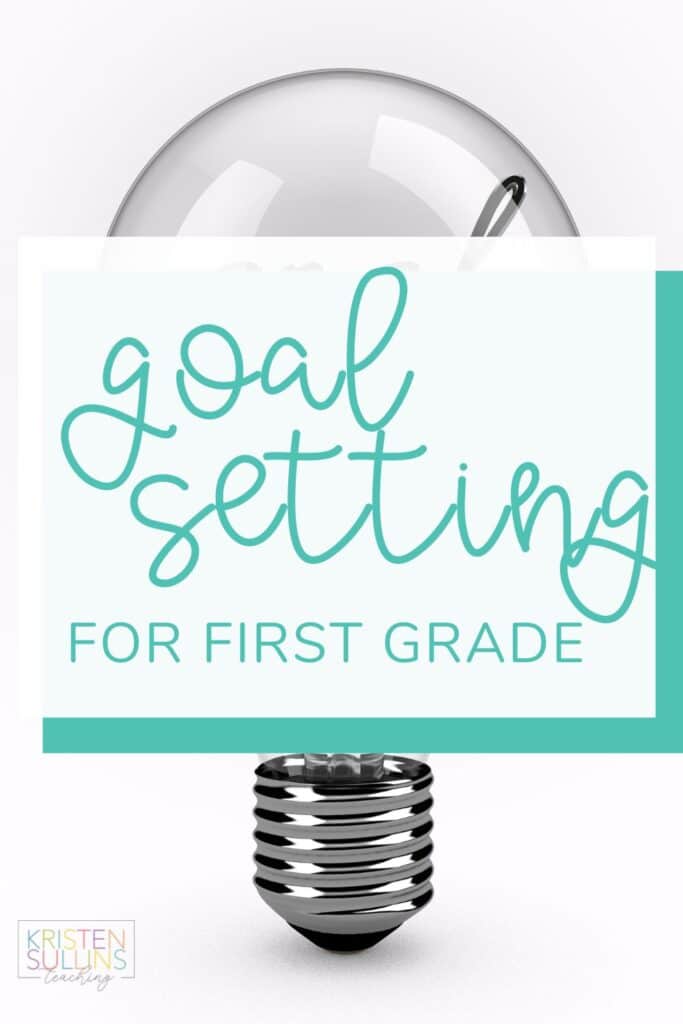
Display your First Grade Goals
What is the saying, “All teachers borrow, great teachers steal?”
Well, at this point I feel like most educational strategies have been copied or adapted from another. I don’t know anyone who has actually developed something NEW, they just take what’s already there and make it work for them. That’s what teachers do!
In the past I have used the Daily 5 and CAFE in my classroom (LOVE!). – CAFE is great for working on strategies and setting reading goals.
It also encourages you and your students to work together when deciding what their focus should be.
Students know what goals they are working on and feel ownership in their learning.
SO, I’m guessing you’re wondering why the borrow and steal quote came up.
Well, I took the CAFE model for reading goals and have adapted it for other subject areas.
In CAFE you have lists of strategies students are working on for Comprehension, Accuracy, Fluency and Expanding vocabulary (CAFE); each student is working on what makes sense for them. Mastering these strategies encourages growth in reading.
I also use these goals/focuses to create targeted reading groups. Using this model, I have created writing skills, strategies and goals that I use to influence my writing groups and I have done the same for math.
These groups are fluid and constantly changing; flexibility is very important when working with students this way.
I prefer to set an entire area in my classroom aside for displaying strategies and for goal setting.
I have a reading, writing and math area. This is where I display strategies and goals we are focusing on so students can see and be reminded of what they are working on.
You can choose to have students put their names next to the strategies that they are working on (posters are great for this) or they can also write these strategies down in a personal journal. The journals are also where I have them keep their goals.
They are free to share their goals and things they’re working on with their classmates, but it is not something that I require. I work hard to keep goals private.
It is no one else’s business what you are working on unless you choose to share that.
Selecting Goals with First Grade Students
First and foremost you need to know what each individual student needs and guide them in their goal setting.
If a student wants to make a goal of improving their reading; then you need to know the steps they need to focus on.
If they are struggling with writing, you need to know where the struggle is; are they having trouble coming up with content or are they struggling with producing correctly spelled words?
Knowing the specifics will help in selecting what strategies or skills students need to focus on.
Reflection is one of the most crucial components of goal setting and is something that not only will benefit students in first grade, but in all grades. Even as adults, reflection is a critical aspect in goal setting. Students must reflect on things they might struggle with, or want to improve on and then from there they can set goals.
Here are some questions you can use when getting student’s brains in gear for goal setting:
What is something you struggled with this year?
What is something you want to learn more about?
What was something you learned this year?
What has been your favorite part of the year?
These are simple prompts that can have a big influence in guiding your students in goal setting.
Types of First Grade Goals
As I’ve said before, I typically have goals in reading, writing and math.
You can also choose to create goals in other subject areas or limit students to one subject area.
When I first started I only did reading and as I’ve gotten “in the groove” I’ve been able to add more subject areas.
It can be time consuming to create and help keep students accountable for their goals, so you want to make sure you are doing something that WORKS FOR YOU in YOUR CLASSROOM. Don’t over-do it or push yourself beyond what is reasonable and realistic.
Here are some examples of goals students have worked towards in the past:
- Goals for Reading
- Improve comprehension – ex: “My goal is to better understand and remember what I am reading”
- Goals for Writing
- Improve handwriting – ex: “My goal is to have neater handwriting when working on my stories. Focusing on keeping my letters on the proper lines and using nice spaces.”
- Goals for Math
- Know numbers – ex: “My goal is to know my numbers 0-120 in standard form, expanded form, using cubes and know how to draw each number”
There are a lot of different ways you can go with goals. Some years I focus on end-of-year goal setting and others we have smaller goals that students work towards each month or quarter. The act of getting students to reflect and set goals is important and can be done as early as first grade.
Growth Mindset and Goal Setting for First Grade
Growth Mindset is something that is beneficial for, well everyone really.
The ability to see struggles and failures as opportunities for growth is something that is very hard for a lot of people; but if they worked on developing a growth mindset earlier on, maybe it wouldn't be so hard.
How many times have we heard, “I can’t do it” “It’s too hard” and so many other things?!
Even first graders already struggle with the confidence we wished they had.
In recent years seeing challenges as opportunities is something I have been really focusing on with my students.
When discussing growth mindset with students we learn that mistakes are a huge part of learning.
I often start by discussing riding a bike; just because you fall off doesn’t mean you should quit. Get back on and learn from it!
We all fall sometimes, and it is important to not stop or give up. The importance of positive talk is also something I am constantly modeling for my students.
When talking as a group and when conferring with students individually, I model using positive talk.
A few years back I read somewhere, I can’t put my finger on where, about the power of yet. It is such a simple word that has a HUGE impact.
If I told you, “you're not reading on a level H”- (which isn’t something I’d say to a student, but roll with me), it sounds harsh! Almost like saying, you're not reading on a level H and you never will.
BUT if I say, “you’re not on a level H yet” that means you WILL be! So much better right? And it provides students with the knowledge that they are learning and growing; just because they aren’t doing everything right now, doesn’t mean they won’t be. “Yet” is a strong word!
I also use it with parents during conferences; making it clear not only to students but to their parents that there is a goal that I believe they can and will reach.
Goal setting is, like I said before, a great way to involve students in their learning and put some responsibility back on them. As educators the biggest thing we can do is ENCOURAGE our students. Be their biggest supporters! If we believe they can do it, they will believe they can do it!


